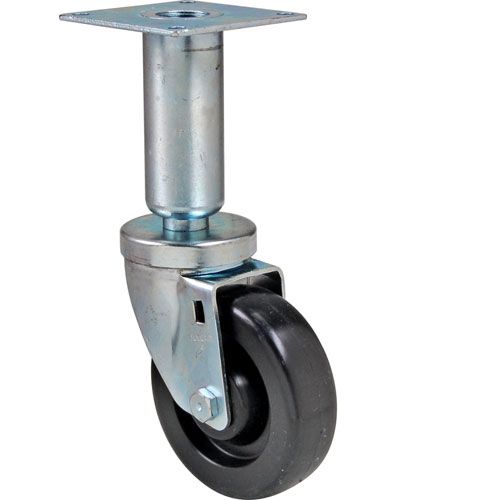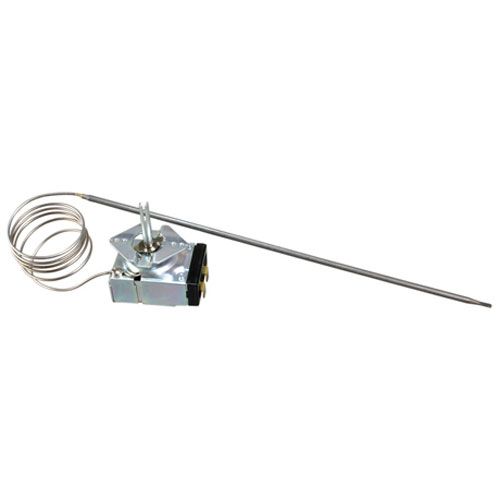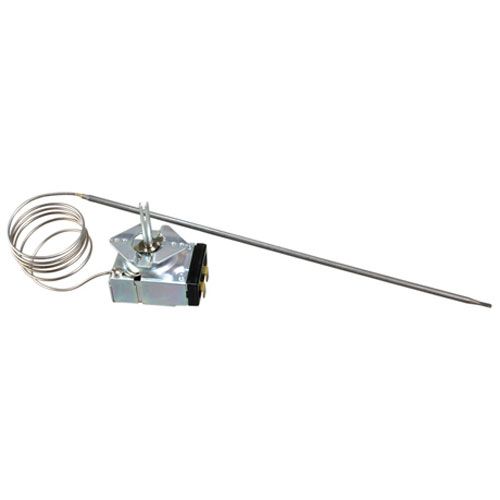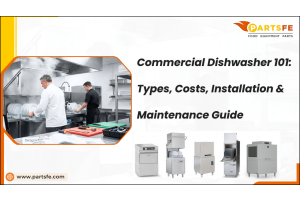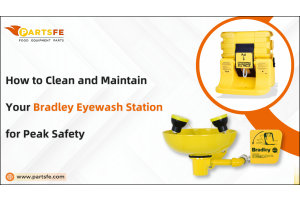Troubleshooting TriStar Replacement Parts in Commercial Fryers: What You Need to Know
When it comes to maintaining the performance of commercial deep fryers, TriStar parts play a crucial role in ensuring efficiency and longevity. Fryers are an essential piece of equipment in many food service operations, and any downtime can result in lost productivity and revenue. However, troubleshooting and replacing parts can sometimes be challenging due to the variety of components involved and the technical nature of these machines. Whether it’s a malfunctioning thermostat, clogged filter, or faulty heating element, understanding how to identify and address issues with TriStar replacement parts is key. In this guide, we’ll walk you through common troubleshooting tips and provide insights on selecting the right parts to keep your commercial fryer running smoothly.
Understanding Your TriStar Fryer Replacement Parts
Learning about TriStar fryer replacement parts enables you to maintain safe and efficient commercial kitchen operations. The TriStar fryer depends on each component to function properly, including heating elements that control oil temperature and filters that remove food debris from the oil. The identification of thermostat functions alongside timer operations and high-limit switch functions enables quick troubleshooting of performance problems to avoid prolonged equipment stoppages. A defective thermostat causes oil temperature instability, while heating element malfunctions produce uneven cooking or complete fryer shutdowns.
The use of authentic Tristar deep fryer parts guarantees both proper installation and equipment protection and safety. Any abnormal equipment noises or delayed heating, or temperature fluctuations require immediate attention. Scheduled maintenance combined with periodic inspections and immediate part replacement helps your fryer exist longer and reduces expensive maintenance costs. Knowing the operational relationship between your deep fryer components allows you to solve technical problems better while providing steady performance and food quality standards for busy commercial kitchens.
Looking for reliable commercial deep fryer replacement parts? PartsFe offers high-quality components from trusted brands like TriStar, Pitco, Frymaster, and Henny Penny to keep your fryer running smoothly. Shop essential parts like thermostats, heating elements, gaskets, and control boards—all in one place at competitive prices.
Common Symptoms of Failing TriStar Fryer Parts
Identifying the typical warning signs of TriStar deep fryer parts failure enables operators to prevent equipment breakdowns while sustaining operational continuity in their kitchens. The following signs indicate that your TriStar deep fryer needs attention:

-
Inconsistent Oil Temperature: A faulty thermostat or heating element will cause temperature fluctuations and improper heating, which results in undercooked or overcooked food.
-
Slow Recovery Time: The time it takes for a fryer to heat up after cooking indicates problems with the heating element, thus affecting kitchen efficiency, particularly during busy periods.
-
Unexpected Shutdowns: The high-limit switch failure can lead to unexpected fryer shutdowns when the temperature reaches unsafe levels.
-
Strange Noises: The fryer produces abnormal noises such as clicking, buzzing, or popping sounds because of loose connections or worn-out timers or electrical problems inside the unit.
-
Excessive Oil Buildup: The quality of your cooking oil and the frying process will suffer when poor filtration or clogged oil filters allow oil buildup to occur.
The early replacement of genuine components for worn-out parts in TriStar fryers helps both preserve equipment performance and increase its operational lifespan.
How to Diagnose and Troubleshoot TriStar Replacement Parts in Commercial Fryers
Commercial fryers need a structured method to detect and fix TriStar replacement parts by systematically identifying underlying problems. Here’s how to troubleshoot effectively:
Inconsistent Heating
The temperature control system of the Fryer operates incorrectly.
Solution: A thermometer should check the thermostat and heating element for proper temperature readings against the set levels. Replace the thermostat or heating element with genuine TriStar parts to achieve proper heating and avoid uneven cooking.
Slow Recovery Times
The fryer requires an extended period to heat up to its set temperature after finishing a cooking cycle.
Solution: To evaluate performance, check the heating element for any visible signs of wear or damage or corrosion. The recovery time and operational efficiency will improve after you clean or replace any blocked filters and verify proper heating element operation.
Unexpected Shutdowns
Operation of the Fryer causes it to shut off.
Solution: A multimeter should check the high-limit switch for continuity because a defective switch can automatically shut down the system. Replace the switch right away to maintain safety and avoid interruptions when the restaurant is busy.
Unusual Noises
The Fryer emits abnormal clicking noises together with buzzing sounds and popping sounds.
Solution: Check the timer components and electrical wiring and loose connections to find the source of the noise. The noise can be eliminated by tightening or replacing faulty timer components and electrical wiring to achieve smooth operation.
Oil Quality Issues
Poor oil quality due to clogging or buildup.
Solution: The optimal oil flow and filtration require regular cleaning or replacement of the oil filter. The oil filter prevents clogging, which ensures even cooking while protecting fryer components from damage caused by dirty oil.
Check out this guide on how to replace your deep fryer filter for detailed proper diagnosis and troubleshooting steps to help maintain efficiency and safety in commercial fryers.
Tips for Installing TriStar Replacement Parts
Proper installation of TriStar replacement parts remains essential to maintain both the operational life and performance quality of your commercial fryer. The following guidelines serve as essential instructions for installing TriStar replacement parts:
-
Turn Off Power and Disconnect the Fryer: First, disconnect the fryer from power while turning off the device before beginning any installation process. The installation process remains safe because power is disconnected and electrical accidents are avoided.
-
Refer to the Manual: Check the Tristar deep fryer manual first because it contains essential instructions for your model regarding part replacement. The manual contains vital information about component numbers, together with step-by-step installation guidelines and required tools for the replacement work.
-
Use Genuine TriStar Parts: Install only original genuine replacement TriStar components since this practice provides both optimal performance and conformity with the system. Non-original parts fail to fit correctly, thus creating additional system failures and potentially voiding the warranty.
-
Handle Components Carefully: Some delicate components such as thermostats and heating elements,s require special handling because they break easily. Be careful with all installed components while completing installation tasks to prevent using excessive force.
-
Test After Installation: Execute a test run of the system after part installation to verify proper functionality. You should test the system by checking temperature settings and heating durations and operational smoothness to verify proper installation.
Regular maintenance schedules must be followed after installation to preserve the part’s lifespan and ensure your fryer operates efficiently and safely with proper commercial deep fryer replacement parts.
For more insights, read this buying guide for commercial deep fryers for a better understanding of fryer components and setup, to ensure optimal fryer performance and longevity.
Preventive Maintenance to Avoid Future Issues in TriStar Fryer
You must perform preventive maintenance on your TriStar fryer to prolong its lifespan along with preventing expensive repairs. Staying on top of normal care practices allows commercial deep fryer parts to operate efficiently as well as prevents unexpected breakdowns.
Here are key preventive maintenance practices to follow:
-
Clean the Fryer Regularly: A proper cleaning routine includes removing oil buildup and food particles, and debris from both the heating elements and the basket. The fryer operates more efficiently when cleaned after every use because it prevents oil filter blockages.
-
Check and Replace Oil Filters: The fryer's heating performance becomes inconsistent when filters become clogged because this leads to inadequate oil circulation that could result in fryer damage. Regular inspection of oil filters leads to proper oil flow and better food quality, so replace them when necessary.
-
Check both the Heating Element and Thermostat: Regular checks of the heating element and thermostat should be performed to detect any signs of deterioration or breakdown. The fryer requires immediate replacement of all faulty components to maintain its heating and cooking functions.
-
Calibrate the Thermostat: Use a thermometer to verify thermostat accuracy by measuring oil temperature at regular intervals. The process of calibration enables both temperature stability during frying and better operational efficiency.
-
Examine Electrical Components: Check the fryer's electrical wiring and high-limit switches for loose connections while inspecting the connections and wiring for wear. Replace or tighten all faulty electrical components to prevent operational failures and ensure safe equipment use.
Your regular preventive maintenance efforts with these steps will help minimize future breakdowns and maintain a reliable operation for your TriStar deep fryer for several years.
Check out this deep fryer maintenance guide to ensure long-term performance and reduce unexpected breakdowns.
The process of fixing Tristar replacement parts remains manageable. Preventive maintenance partnered with common sign recognition will help you stay ahead of component failures, which will enable smooth-running kitchen operations. Early signs of equipment malfunction, such as inconsistent heating and oil leaks, and error codes, enable you to immediately replace defective components, thus avoiding major breakdowns. Regular inspections and proper care of your Tristar deep fryer will both lengthen its operational lifespan and ensure food safety standards in your service. The combination of proper maintenance knowledge and regular upkeep will help your commercial fryer operate as a dependable tool throughout multiple years of service.
FAQs
Where is the reset button on a TriStar fryer?
The reset button on a TriStar fryer, specifically for a high-limit switch reset, is typically located behind the control panel, often near the gas valve or on the back panel.
Why is my TriStar fryer not working?
Common reasons include a tripped high-limit switch, faulty thermostat, or power supply issues. Check connections, inspect parts, and reset the safety switch if needed.
What does a thermocouple do on a TriStar fryer?
A thermocouple senses the pilot flame and sends a signal to keep the gas valve open. If the flame goes out, it cuts the gas supply for safety.
Why is my TriStar deep fryer not heating up?
This could be due to a faulty heating element, a broken thermostat, or a tripped high-limit switch. Test these components and replace any that are damaged or worn out.


